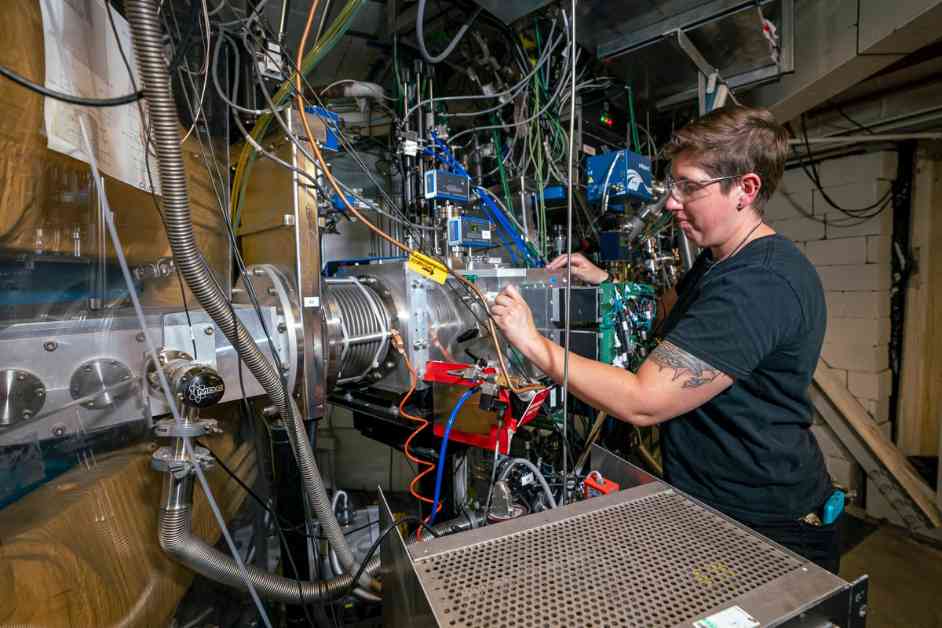A new method of creating superheavy elements has brought us one step closer to unlocking the mysteries of the “Island of Stability” on the periodic table. Scientists at the Lawrence Berkeley National Laboratory in California have successfully synthesized element 116, livermorium, using a novel approach involving titanium 50. This breakthrough could potentially lead to the creation of even heavier elements, expanding our understanding of the atomic world.
Traditionally, the synthesis of superheavy elements has relied on calcium 48, a “doubly magic” isotope known for its stability. However, the limitations of calcium 48 have prompted researchers to explore other options. Titanium 50, despite its nonmagic properties and lower stability, has emerged as a promising candidate for creating superheavy elements beyond what calcium can achieve.
The process of fusing titanium 50 with other elements to create superheavy nuclei is complex and challenging. The researchers at Berkeley Lab used the 88-Inch Cyclotron to generate high-speed atomic collisions, aiming to produce livermorium through the fusion of titanium 50 with plutonium. Despite the difficulties posed by the properties of titanium 50, the team persevered and successfully synthesized detectable amounts of livermorium after 22 days of continuous bombardment.
The success of using titanium 50 opens up new possibilities for the synthesis of even heavier elements, with element 120 being the next ambitious target. This element, which would be the heaviest yet and the first in the eighth row of the periodic table, holds the promise of long-term stability, potentially residing on the coveted “Island of Stability.” While the exact energy requirements for synthesizing element 120 remain uncertain, the experimental results from the livermorium synthesis provide valuable insights for future research.
The creation of element 120 could revolutionize our understanding of electron shells and the periodic table, offering new avenues for exploration in nuclear physics, materials science, and beyond. Accessing uncharted territories in the atomic realm, such as the theoretical g orbitals, could fundamentally change our perspective on chemistry and the building blocks of matter.
As we continue to push the boundaries of superheavy element synthesis, the quest for the “Island of Stability” remains an exciting and challenging endeavor. While the road ahead may be long and uncertain, the potential rewards of discovering new elements and expanding our knowledge of the atomic world make the journey worthwhile. Stay tuned for more groundbreaking developments in the field of superheavy element research as we venture into uncharted atomic realms.


